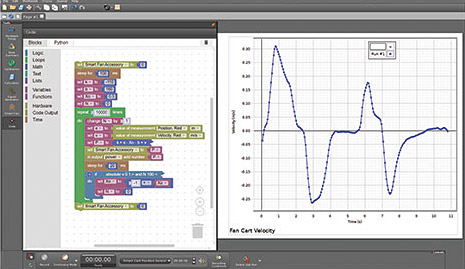
Open the Pasco Capstone program in the computer and click on the file folder icon, or use the File menu to open a new activity.įind, in the main hard drive of the computer, the file “Wrok-Energy.cap”.

The force sensor should be connected to the analog input 1.

The motion sensor plugs must be connected to digital channels 1 and 2 of the machine. These measurements can then be used to determine work and kinetic energy. In this experiment it is important to note that we expect a systematic lack of agreement due to the presence of friction.įor this experiment you will record the position of the cart with the pulley photogate and determine the force exerted on the cart with a force sensor. These measurements will allow us to test the statement of the work-energy theorem. In this experiment, a set of measurements will allow you to determine the work done by one external force on an object (a cart), and the change in the cart’s kinetic energy. To prepare for this activity, please review in more detail these definitions and relations, and study a few simple examples of the application of the work-energy relation. The work-energy relation states that in a process, the total work equals the change in energy of the system: In the simplest case, when an object experiences a displacement d while under the action of a force F parallel to the displacement, we define the work done during the process as: Work is not a property of a system but is associated to a process. The total energy is a property of the object and can be calculated at any specific time. The total energy of the system is the sum of the kinetic and potential forms of energy: Where h is the height of the object measured from a given reference point. Other forms of energy are called potential, and include gravitational potential energy, which for an object near the surface of the earth is Kinetic energy K is defined in terms of the mass and velocity of an object. The simplest form of energy is associated with the motion of object. Corollaries of this theorem are of great importance for example, the conservation of energy for closed systems is a restatement of this basic result. It relates several physical quantities: different types of energy, kinetic and potential, and work. The work-energy theorem is one of the fundamental results of Physics. We will test the prediction of the work-energy relation: in a given process, the change in energy equals to the work done on the system.

In this activity we carry out measurements of two important physical quantities: work and energy.


 0 kommentar(er)
0 kommentar(er)
